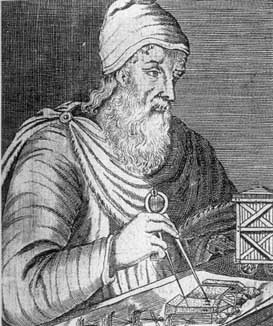
Charles-Augustin de Coulomb
He was a military engineer and a physicist. He was the first scientist to establish the quantitative laws of electrostatics. He also investigated in other fields, like magnetism, friction and electricity. He invented the Torsion balance, but his most important contribution was his law:
The force of attraction between two forces is directly proportional to the product of the charges.
F=(qxq')/d^2
The scale used in physics to measure the electrical charge is named in honor of Coulomb, Coulomb.
If you want a more complete explanation of the Coulomb's law, you can learn more from http://en.wikipedia.org/wiki/Coulomb%27s_law
James Clerk Maxwell
Was a Scottish theoretical physicist and mathematician. His most important achievement was classical electromagnetic theory, synthesizing all previously unrelated observations, experiments and equations of electricity, magnetism and even optics into a consistent theory. His set of equations—Maxwell's equationsdemonstrated that electricity, magnetism and even light are all manifestations of the same phenomenon: the electromagnetic field. From that moment on, all other classic laws or equations of these disciplines became simplified cases of Maxwell's equations. Maxwell's work in electromagnetism has been called the
 "second great unification in physics.
"second great unification in physics.
Maxwell demonstrated that electric and magnetic fields travel through space in the form of waves, and at the constant speed of light. Finally, in 1864 Maxwell wrote "A Dynamical Theory of the Electromagnetic Field", where he first proposed that light was in fact undulations in the same medium that is the cause of electric and magnetic phenomena. His work in producing a unified model of electromagnetism is considered to be one of the greatest advances in physics.
If you want a more complete explanation of the Coulomb's law, you can learn more from http://en.wikiquote.org/wiki/James_Clerk_Maxwell
Archimedes

He is considered the most important scientist and mathematician of antiquity. He invented:
-The number π
-The worm
- The compound pulley
- The cogwheel
- The sprocket
- The law of the lever
-The hydrostatic law: a body immersed in a fluid experiences a vertical and upward thrust equal to the weight of evacuated fluid.
He also invented war machines like catapults and a system of mirrors that burned the Roman ships.
He was the most influential scientist of the ancient world and their inventions are still used and heavily edited today.
He was an English philosopher, mathematician and alchemist physical. He described:
- The law of gravity (observing an apple falling from a tree)
- The color spectrum of light passing through a prism.
- The laws of mechanics.
- Centripetal force.
- Decomposition of light color
-He proved Kepler's laws mathematically from his theory of universal gravitation.
- Newtonian Mechanics.
However, Newton devoted much effort to the study of alchemy.
Thomas Edison
Was one of the inventors who contributed most to change the life of modern man. With over a thousand patented inventions, he is one of the most important modern inventors, because his inventions are widely used and modified nowadays. He worked in optics, acoustics and electricity.He invented 1099 things, the most important were:
thousand patented inventions, he is one of the most important modern inventors, because his inventions are widely used and modified nowadays. He worked in optics, acoustics and electricity.He invented 1099 things, the most important were:
-The Filament lamp
-The phonograph (a device allowing recording and play any sound)
-He designs an electric car.
-He led an experimental sound film in which the image was coordinated with the sound of a phonograph record.
-The accumulator.
Albert Einstein
Is one of the top researchers in history. He dedicated himself to physics and m
athematics, researching and developing theories as:
- Theory of relativity
-The Brownian motion (writing an article about the movement required by the molecular kinetic theory of heat of small particles suspended in a liquid stationary)
-The mass-energy equivalence
- The quantum theory (about the photoelectric effect)
- The atomic bomb
You can learn more about Eintein’s theories at http://www.teslasociety.com/einstein.htm
Gregor Mendel was an Austrian naturalist who wrote the laws of Mendel, the most important laws about genetic inheritance:
-Law of segregation
- Law of Independent assortment
Those laws discuss about the parent-child genetic transmission. Learn more about the first and the second law at http://www.purchon.com/biology/mendel.htm.
Marie Curie and Pierre Curie
She was a polish scientist who investigated radiation from elem
ents like thorium and uranium with her husband, Pierre Curie. They isolated two new chemical elements from pitchblende: the polonium and the radium, and discovered other elements like thorium and actinium. They discovered other thing: Working with some elements like radium, later, helium atoms appears.
Marie Curie won the Nobel Prize of chemistry; she was the first woman to achieve the Nobel Prize.
You can learn more about Marie Curie and Pierre Curie at http://womenshistory.about.com/od/mariecurie/p/marie_curie.htm
Correction about Einstein
Einstein did not invent the atomic bomb. The theory of relativity was used on its development. Einstein's liability in the development of the atomic bomb was that he requested permission from Roosevelt to allow the German research in the field of nuclear weapons, and then after defeating Germany in World War II, Americans used these knowledge to develop the bombs of Hiroshima and Nagasaki




0 comentarios:
Publicar un comentario